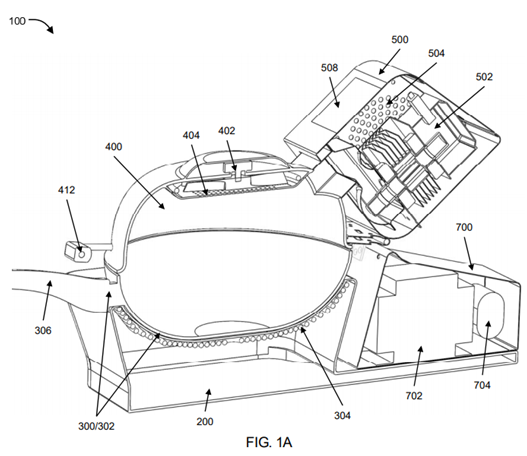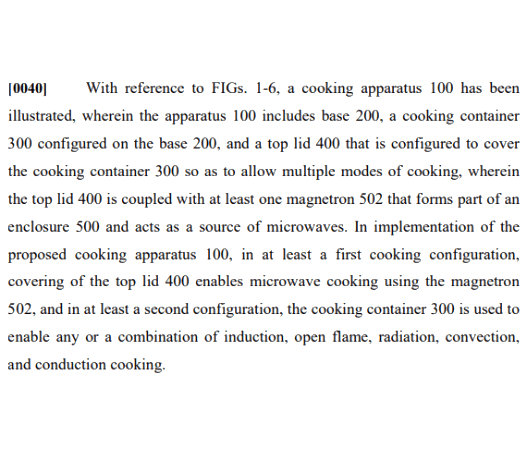Patent Illustration & Drawing Services
Introduction
The art of replicating an invention in a 2-dimensional diagram for a better platform for understanding the invention can be termed an illustration. It becomes necessary to include an illustration in a patent application, which is commonly referred to as a patent illustration, patent drawing, patent figures, invention drawing, and patent images, among other terms. A drawing/diagram is a very important factor in a patent application for a better understanding of it by a common man. Patent law also mandates the requirement for drawings in a patent application for clear illustrations. A good patent illustration can facilitate patent drafting, speeding up the entire process along with the application’s prosecution. It is often said that an application’s illustration is just as significant as its drafting, if not more so, and that it requires the same level of knowledge, ability, and diligence as an application’s draft which makes it advantageous to convince the examiner and to expedite the whole process.
History of Patent Drawing and its evolution
In the US, patent models were necessary from 1790 to 1880. A patent model was a small, hand-crafted representation of an invention’s workings that was no bigger than 12″ by 12″ by 12,” or 30 cm by 30 cm by 30 cm. At the beginning of the twentieth century, several inventors still voluntarily submitted models. An inventor may occasionally still choose to offer a “functioning model” as proof of real reduction to practice during an interference proceeding. In some jurisdictions, patent models have been used to illustrate how an invention works. Samples of genetic material or DNA sequences may be required for applications using genetics.
In 1793, the United States’ patent law was updated. It said that if the description is unclear, the USPTO Commissioner may request more details, drawings, or diagrams. Around 20 patents were being granted annually at that point, and the Secretary of State was seen to be under too much time pressure. Applications for patents were no longer reviewed. A $30 filing fee (which has now increased to $1000 in 2006 US dollars) and a written description of the invention, together with a model of the invention, if suitable, was all that was required to obtain a patent.
Advantages of having a good patent illustration
It is presumably believed that, if it is not in the drawings, the patent application doesn’t contain it either. In almost all cases other than those involving chemical compositions or compounds, it has been noted that the invention can fit one or two figures in it, hence it is likely that the examiner will ask the applicant or their attorney to provide a diagram so that the invention can be projected in its entirety.
Illustrations should be such that most individuals can comprehend the invention in its entirety only by looking at our illustrations. Instead of being word-oriented, the majority of people are picture-oriented. The patent graphics make it much easier for them to comprehend an idea. A patent illustrator is required at this point. An expert in visualizing architecture, machinery, biological aspects like the alteration of a DNA strand, and from a variety of fields combined, a patent illustrator is someone who can express intricate information to a broad point of focus.
A good patent illustration comes to rescue a patent application from disqualification in case the patent drafter forgets a thing or point from all those enabling points which make an invention stand on the ground of patentability. Even if images are permitted as illustrations for design patents, it is preferable to file line drawings instead of photographs alone because they will aid in achieving wider protection. The need to add as many characteristics as possible in the drawings may be present in the inventor, but one should keep in mind that excessive complexity may generate objections or limit the scope of the protection that will be offered. Therefore, it is best to have the document reviewed by patent attorneys and illustrators who are familiar with both the underlying design or invention and the laws and regulations of the patent offices.
In addition, as part of our quality procedures, we here at IIPRD pay close attention to spot irregularities that an IP attorney could overlook, which unquestionably aids in lowering office actions. A team of experienced illustrators keeps in mind which all countries the application may be applied to and takes a composite approach to reach the required standard and guideline to ensure that future re-work is minimized to the greatest extent possible and that minimal office actions are received for the drawings’ re-work. This is how we create an appropriate and acceptable Patent Drawing. Naturally, that results in significant time and money savings.
Rules for drawing illustration/drawing
USPTO Rules
Flow diagrams and other diagrams are regarded as drawings by the USPTO. While finalizing the drawings, the margins and page size must also be taken into account. The most crucial components are the instructions on the illustration itself, such as the requirement that all drawings be line drawings with clear boundaries. There are specifications for how the cross section must be represented. It’s also important to consider the drawing’s scale and the way references are used.
PCT and European Union Rules
The PCT rules and the European Union rules for drawings are identical to those of the USPTO regulations when it comes to line drawings and cross-sectional representations, which are both required by the World Intellectual Property Organization. The diagram references should be legible and enclosed in parenthesis.
IPO Rules
The provisions of Rule 15 must be followed when preparing drawings for filing a patent in India where explanation by drawings is required to support the invention; however, in the case of a full specification, if the applicant wishes to do so with drawings submitted to its provisional specification as drawings or parts of the drawings for the full specification, it suffices to refer to them in the full specification as those in the provisional specifications.
Our Approach
IIPRD provides expertise on patent drawings and illustrations to IP professionals and inventors as we have highly experienced and credible patent illustrators concerning its illustration services in various fields of patent such as chemistry, electrical as well as mechanical engineering, biotech, and medical and chemistry sectors. It may be considered a significant advantage for an applicant to make it more persuasively acceptable to the examiner and the general public to grasp and approve the idea, as the phrase suggests if at any point throughout the application it is capable of illustrating by way of a drawing? A picture is worth a thousand words, right? Here is where we step in and apply our experience to make the most of this advantage for both us and the applicants. We extend our services to various jurisdictions and comply with their respective regulations such as IPO, USPTO, EPO, and other Patent Offices.
We deliver clear, precise, and prompt illustrative services with trustworthy staff. Apart from this, IIPRD also helps in substantial cost as well as time-saving by identifying inconsistencies that an applicant might miss, which helps in reducing the future re-work. This helps in minimizing office actions.
Exemplary Patent Illustration Prepared by K&K:
APPLICATION NUMBER: 201613026869


